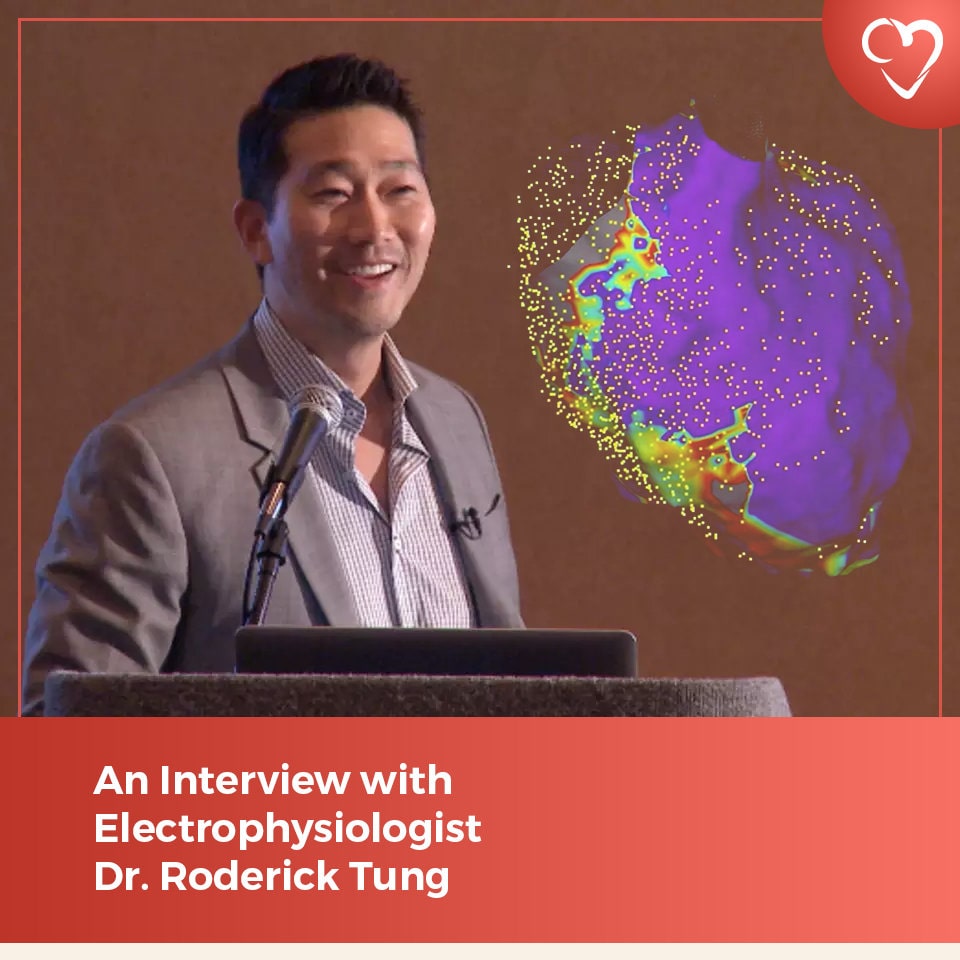
Occasionally here at CardioVisual, we like to interview a physician about what they’re passionate about within medicine what it is exactly that makes them tick. This month, we spoke with electrophysiologist Dr. Roderick Tung about how he got interested in cardiac electrophysiology, what he’s excited about outside of work, and the biggest challenges face academic medicine.
CardioVisual: What was it that interested you in cardiac electrophysiology? What drives you to such intricate work?
Dr. Roderick Tung: I had my first episode of supraventricular tachycardia as a freshman in college. I had an ablation in my 4th year of medical school and was cured. This experience made me truly believe in the power of ablation. In medicine, it is very uncommon to be able to actually cure a disease. We treat and palliate hypertension and hypercholesterolemia and diabetes in internal medicine. We open up blockages but don’t cure coronary artery disease. Conditions like SVT, atrial flutter, and ventricular tachycardia in normal hearts can actually be cured with catheter ablation. This makes coming to work everyday extremely exciting and rewarding. Every case is different and represents an opportunity to help improve a human being’s quality of life.
The possibility of discovery is what drives use to do mechanistic work at UChicago. There is so much that we don’t understand about the human condition and pathologic disease states. Any time that we have the opportunity to answer an unanswered question, it is exciting. I am most excited about understanding the mechanism of ventricular tachycardia, because sudden death is a leading cause of death and catheter ablation has improved over the past decade. It is thrilling to observe that life-threatening rhythm can often be eliminated with one burn (radiofrequency) in the heart after we use newer technologies to localize the reentrant focus. The current generation has access to tools that the pioneers and giants of the field were not privy to, and I believe there is an intellectual mandate for us to use them responsibly and creatively to advance the science of arrhythmias.
CV: What are some of your interests outside of your medical practice? RT: I love design: fashion, structural, graphic. While this seems unusual, the appreciation for electrophysiology lies in the intricate details that can be appreciated with a keen eye, similar to fashion and interior design. I also enjoy performing physiologic experimentation with diet and exercise. I committed to intermittent fasting and daily cardio with resistance training and saw total transformations in my cholesterol and body composition. It’s easier to recommend new lifestyle strategies to patients when you walk to the walk! My wife and I also love to travel, and appreciate the innovative food culture in Chicago. And I wish I had more time to work on my golf game!
CV: What’s your biggest challenge as a researcher and physician?
RT: Academic medicine is no longer the same as two decades ago. The practice of medicine is currently rewarded by clinical productivity and protected time no longer exists without external funding, yet applications to the NIH require significant protected time and are appropriately difficult to come by. Academic days are actually academic nights, and those that continue to be driven by the scientific method and publications need to make sacrifices in their personal and family lives. My concern is that the millennial generation may not have the same ethic or passion. Discoveries and innovation come from passion and playing for the long game, with a daily commitment to “watering the soil” and delayed gratification. While many young researchers look for shortcuts, there is no short cutting of steps in science. Those who know, will know.
CV: How do you see the application of technology in your field ? What do you see as the role of clinicians in leading development of technology in healthcare?
RT: Social media is a great forum to interact and publicize new ideas and work. We hope to harness its power in a productive way that can be an education source for students, colleagues, and patients. Physicians are often placed in the role of “Earliest” or “Early” adopters of new technologies. I dream of a day when physicians are able to be the primary developers of new medical technologies, with an easier path from engineering to capital to market.